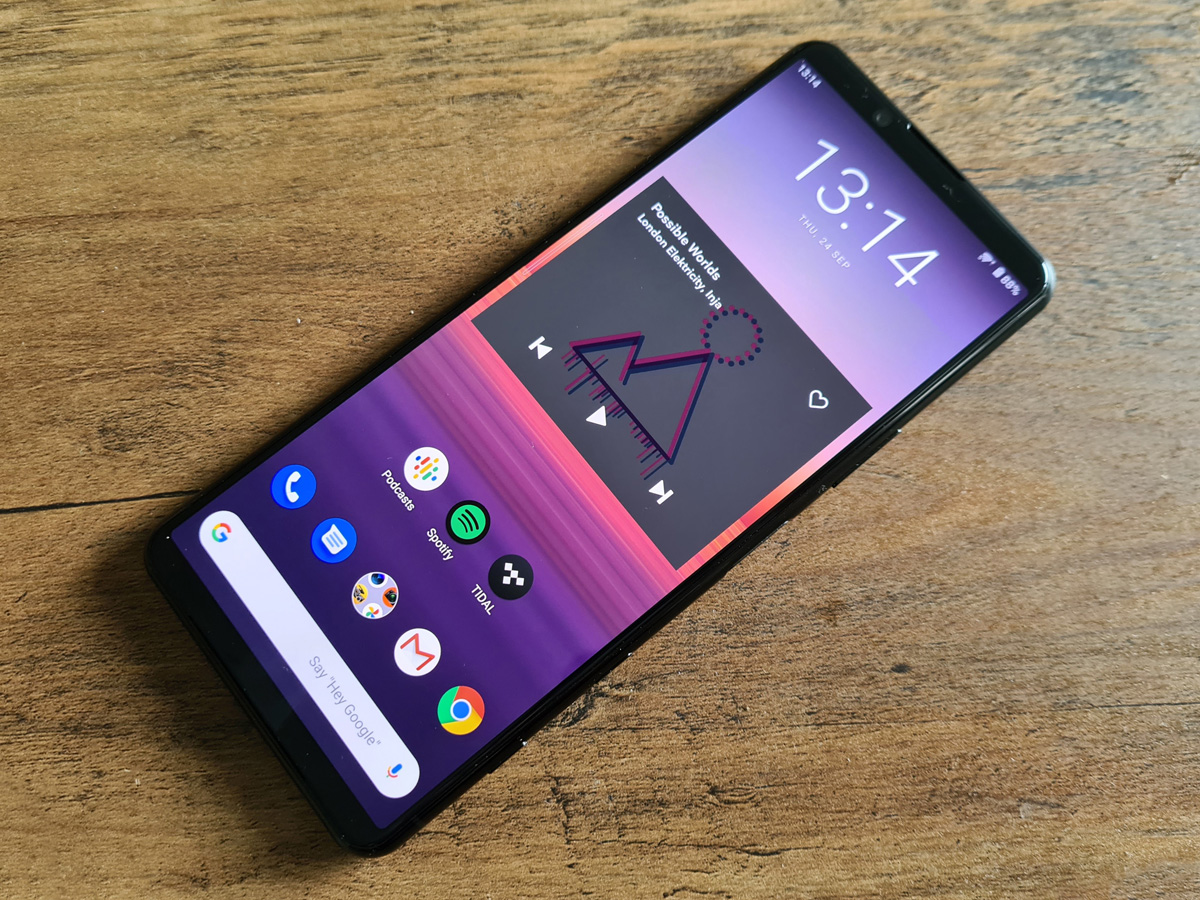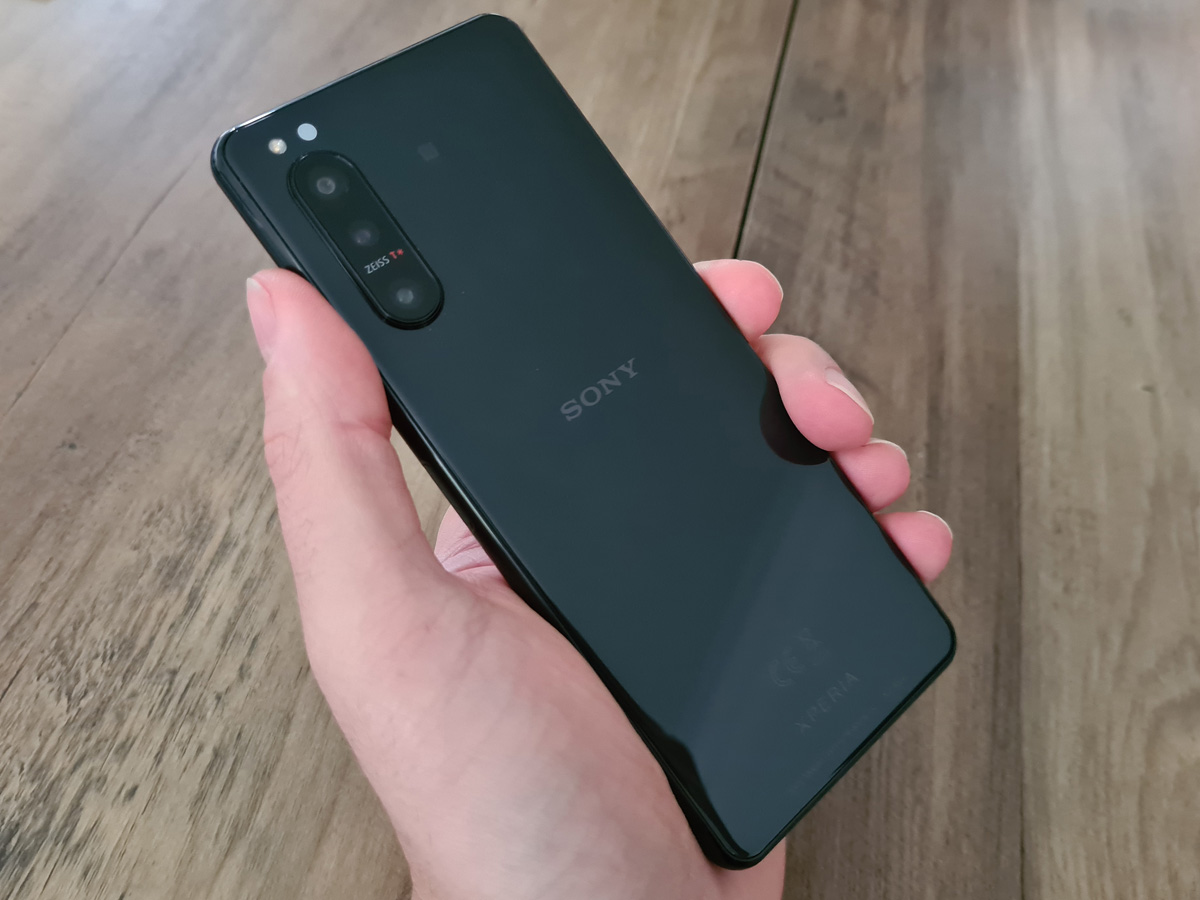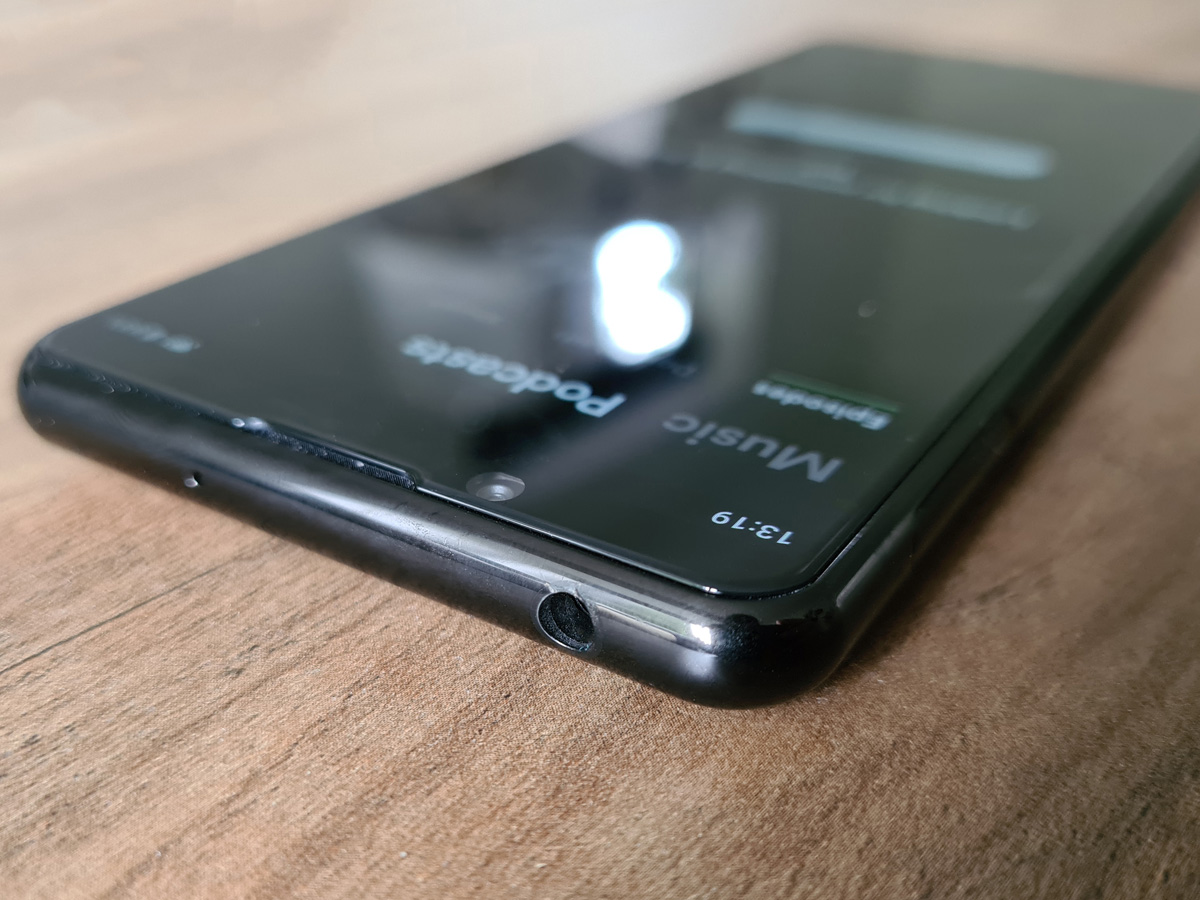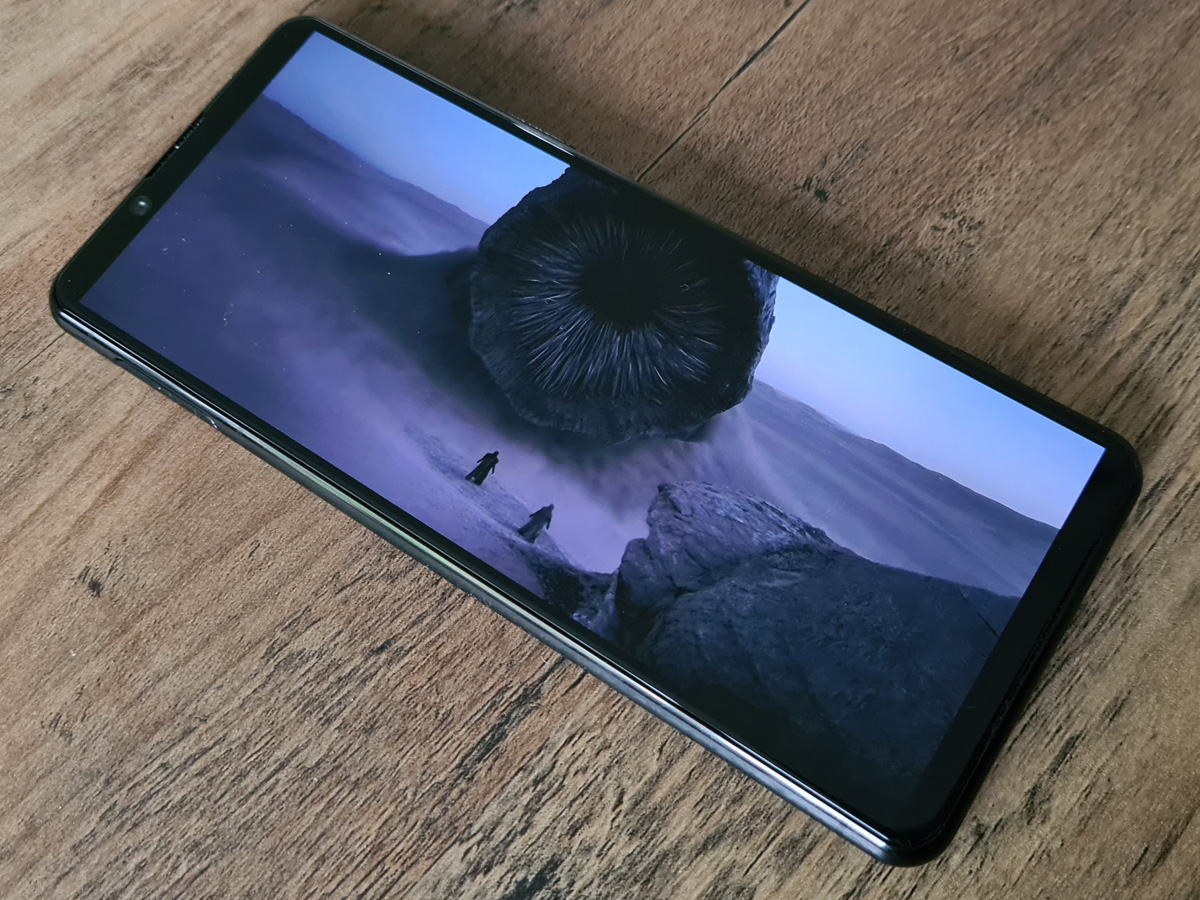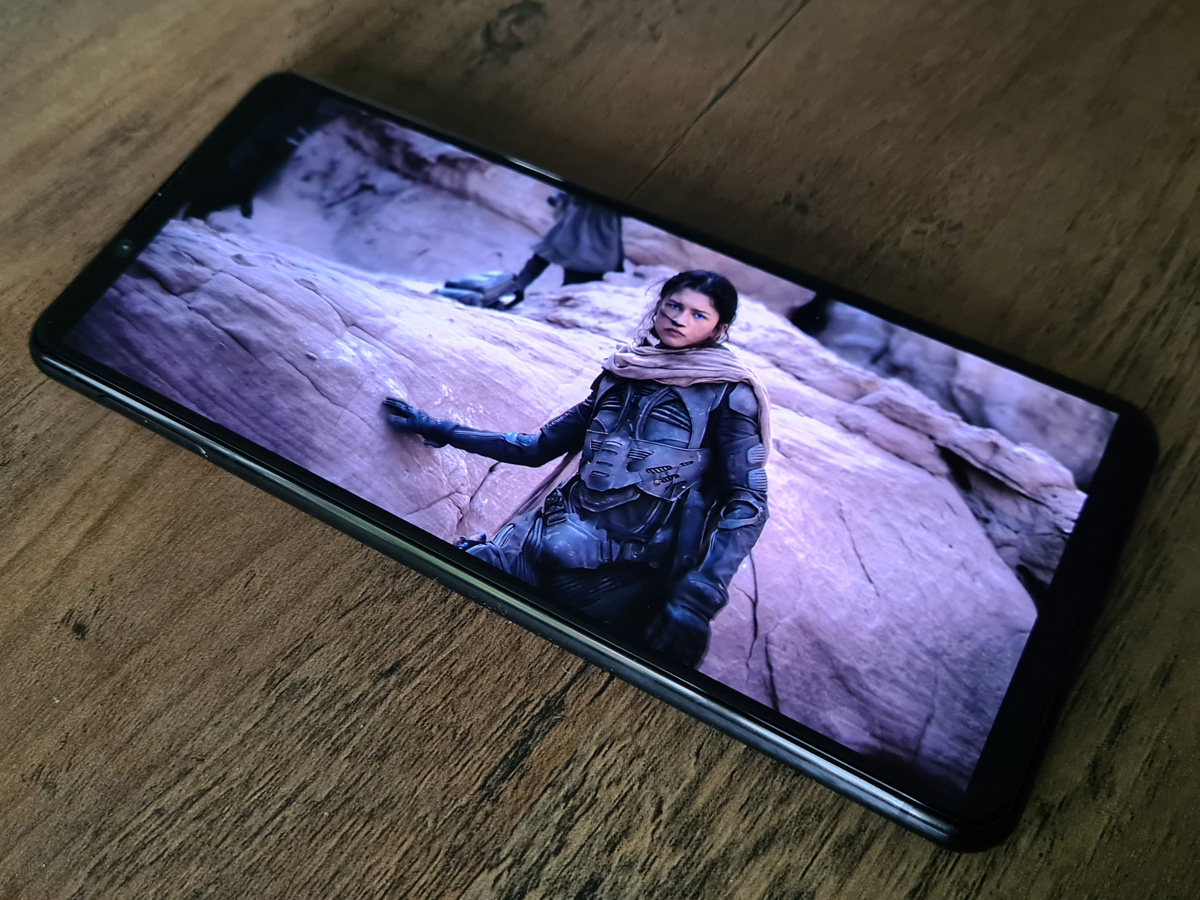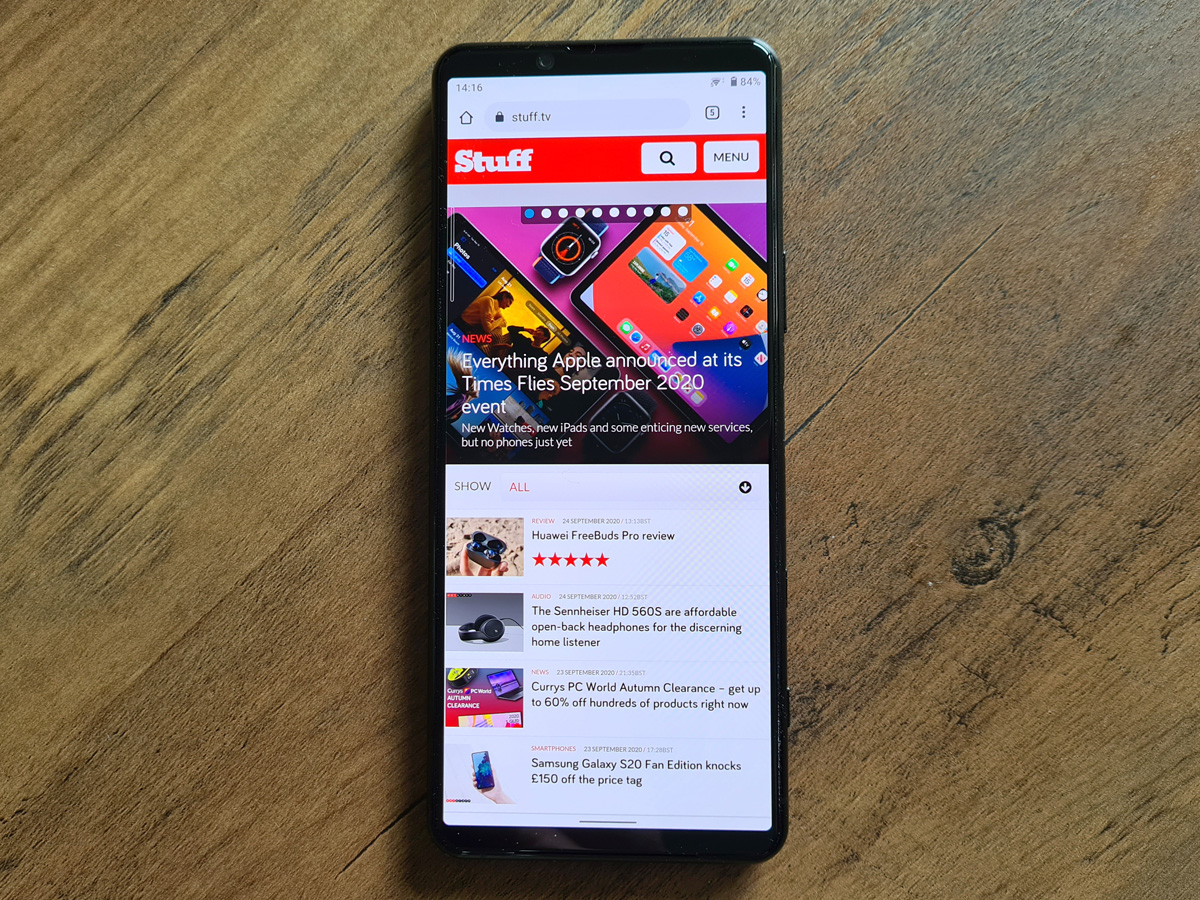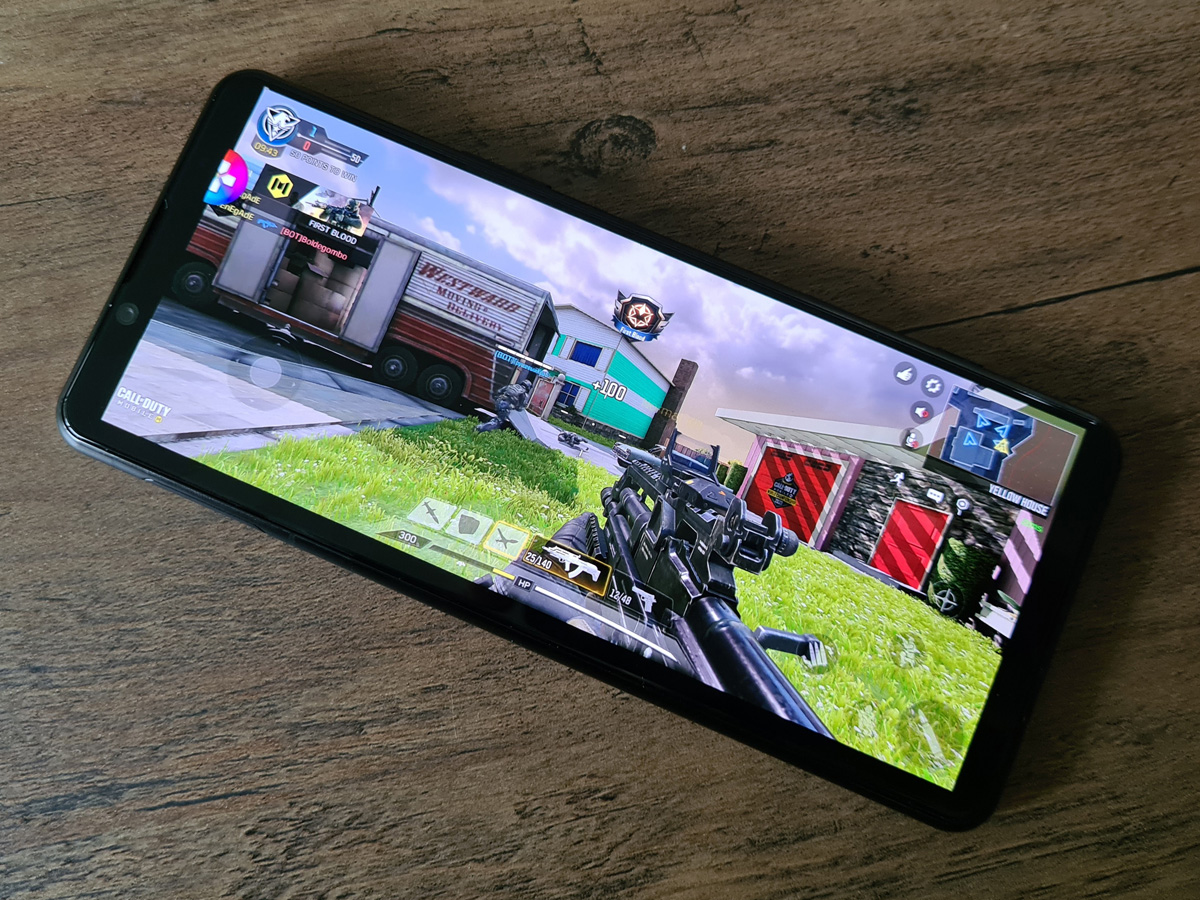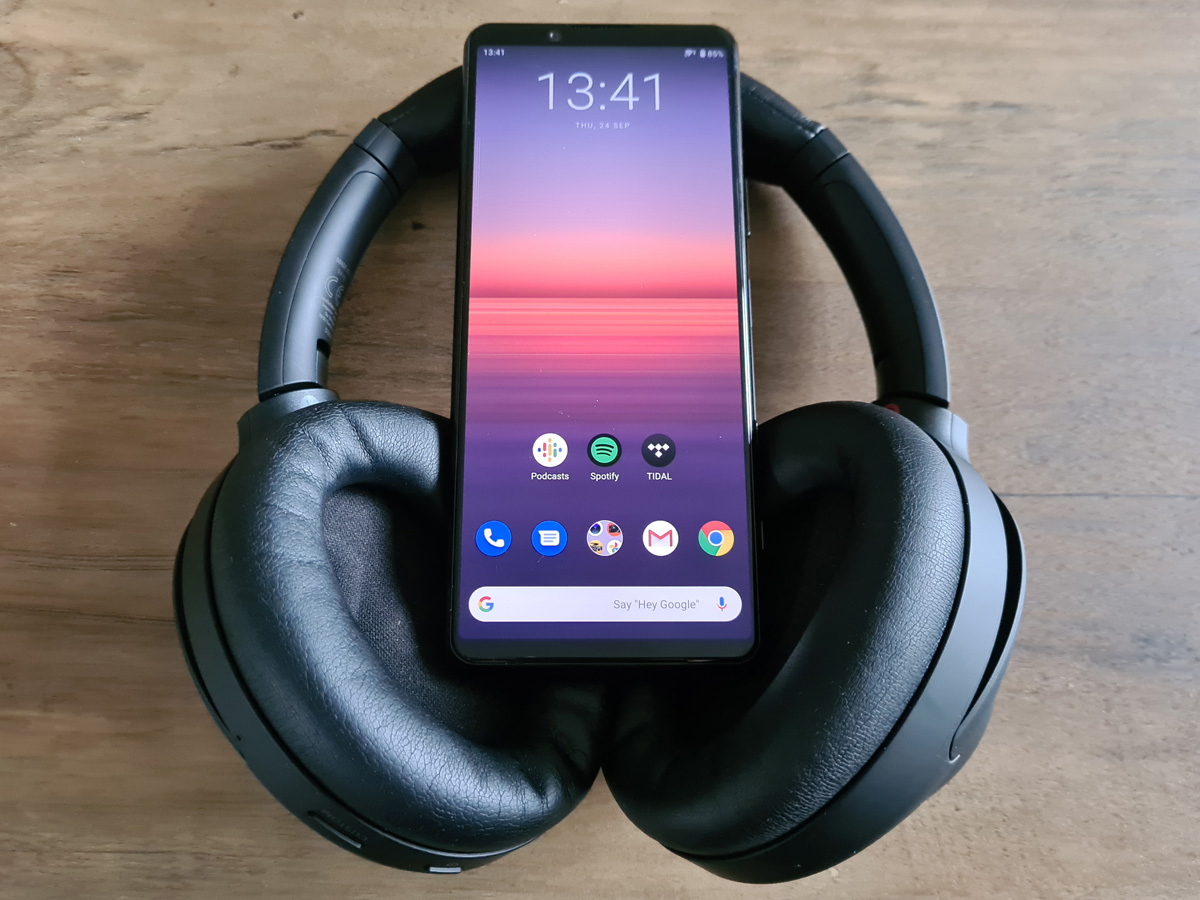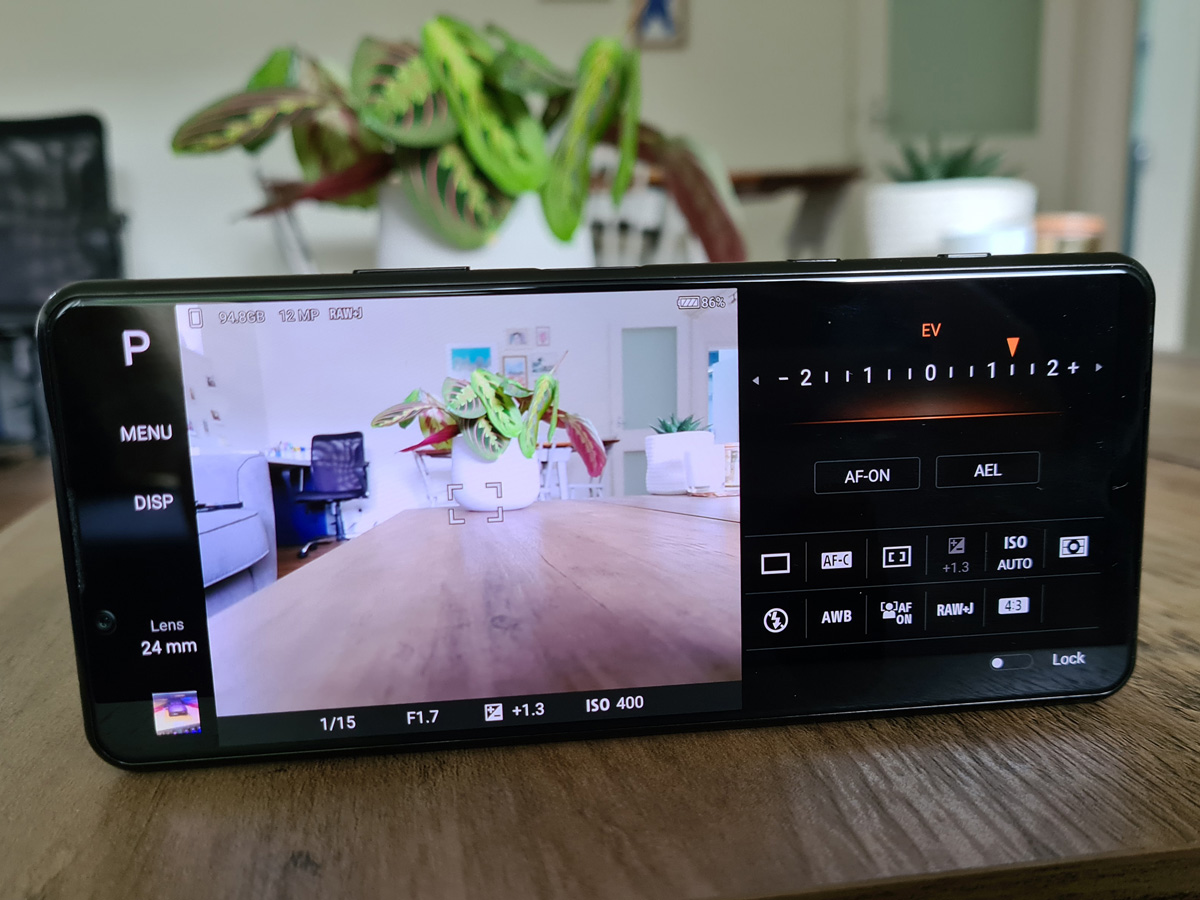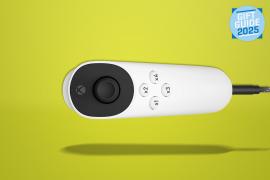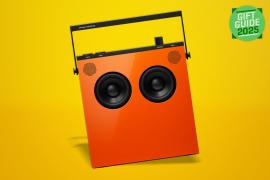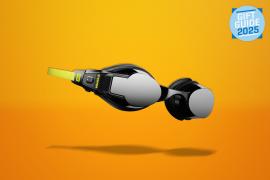Sony Xperia 5 II review
Compact dimensions, not compromised specifications
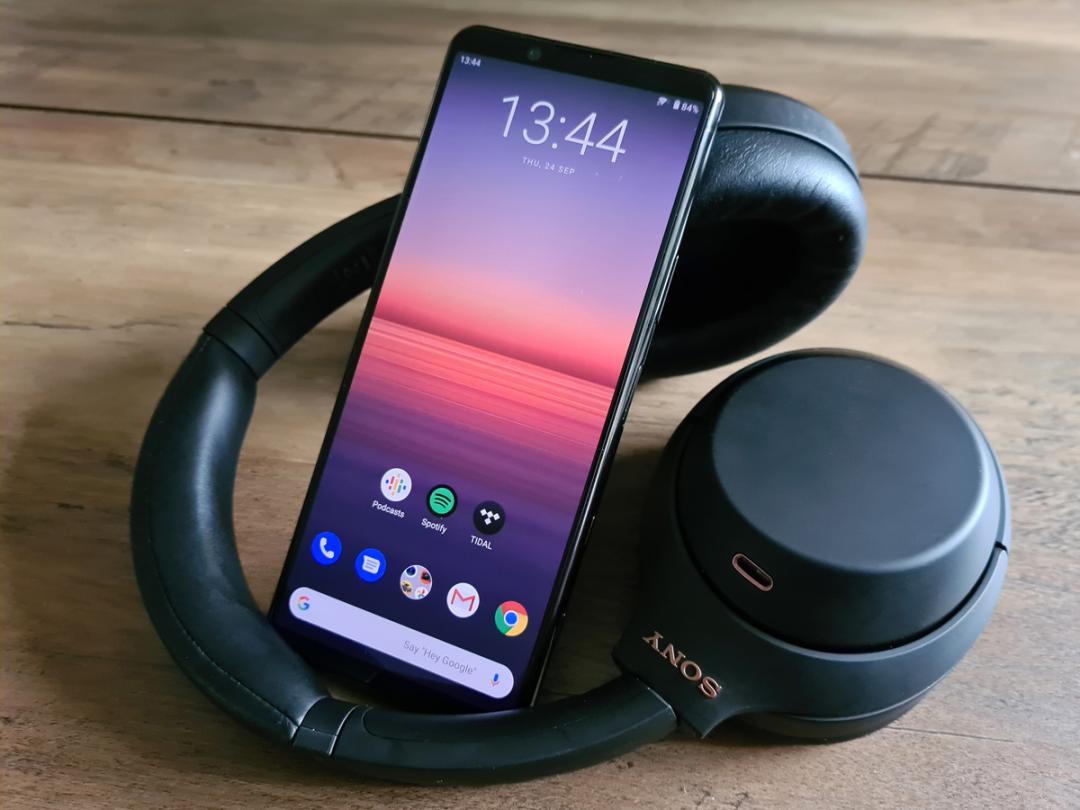
Meet the latest player in the “shrunken flagship” phenomenon.
You know the drill by now: take the whizz-bang range-topper, cut a few features here and there, then find a way to squeeze it all into a more pocket-friendly shape.
Seeing how much Sony managed to pack into the Xperia 1 II (cinema-grade display, major CPU muscle, a camera so fast it could embarrass full-on DSLRs), doing the same on a smaller scale sounds like quite the challenge. And yet here we are.
The Xperia 5 II might be Sony’s most competitive phone to date – and it even manages to go one better than its sibling in a few key areas.
DESIGN & FEATURES: SMALL TOUCHES
You’ll have to look closely to spot the difference between last year’s Xperia 5 and this new version – as with the Xperia 1 II, we’re talking minor tweaks instead of major design shifts.
While it’s not quite like stepping back in time to the Xperia Compact days, the 5 II’s skinny dimensions definitely make it easier to hold than its bigger brother.
The glass and metal sandwich styling remains, as does IP65 and IP68 water resistance, with Gorilla Glass to help reduce scratches and cracks, though it’s still every bit the fingerprint magnet.
The three-lens rear camera array is largely unchanged, so it still sticks out from the glass, but not nearly as much as some rival handsets.
All the hardware buttons can be found on the right side of the phone. Camera nerds will be happy to see Sony’s trademark physical shutter button make a return, while Google fans will appreciate having one dedicated to Google Assistant. The power button and fingerprint sensor have finally been merged into one button, too. Southpaws still won’t find it as convenient as an in-display scanner, but accuracy is very good and it’s quick to bypass the lockscreen.
Other bonuses include the returning 3.5mm headphone port, and the SIM tray that pops out with a fingernail – no need to go scrabbling for a paperclip every time you want to swap microSD cards any more.
DISPLAY & SOUND: BRAVIA FOR THE MASSES
If the Xperia 1 II’s 4K screen was the ultimate in excess, then the Xperia 5 II is Sony putting its sensible hat back on. And yet there’s still plenty here to get excited about.
You still get an OLED panel that supports HDR and a cinema-like 21:9 aspect ratio, stretched across a more palm-friendly 6.1in. The pixel count now maxes out at 2520×1080, but the refresh rate has been boosted all the way to 120Hz. It makes scrolling feel silky smooth, helps reduce motion blur and makes games more responsive – once you turn it on, you’re not going to want to turn it off.
The bods from Bravia have created two different display modes: Standard mode massages vibrance and contrast to help your photo library leap off the screen, and Creator mode swaps into 10-bit colour and BT.2020 calibration for more nuanced hues. The latter kicks in automatically when you log in to Netflix, so you’re seeing exactly what the director intended, but both produce well-judged, lifelike colours.
The panel is still plenty detailed enough for photos and Full HD streaming, with excellent viewing angles and the impressive contrast that only OLED tech can provide. Peak brightness still lags a little behind rival flagships, but you’ll only notice in a side-by-side comparison; outdoor visibility isn’t really an issue.
Skinny top and bottom display bezels don’t just disguise the selfie camera, so there’s no notch or hole punch to obstruct your view – they also make room for a set of stereo speakers. Sony Music had a hand in tuning them, and they have real punch, with clean vocals and a powerful mid-range. Dynamic vibration, which uses the haptic motor to resemble bass, still feels a bit gimmicky, but it’s easy to disable if you don’t like it.
Don’t worry if you haven’t picked up that pair of WH-1000XM4s yet, either: the Xperia 5 II is still rocking a 3.5mm headphone port, so you can use your existing headphones. If you do own a set of Sony cans, LDAC Bluetooth ensures you’re getting the best possible wireless connection. Naturally it plays nicely with Hi-Res audio files, and DSEE upscaling is on hand to work its magic on your Spotify playlists. It makes a real difference, on even the most basic of bundled earphones.
CAMERA: NEVER MISS A MOMENT
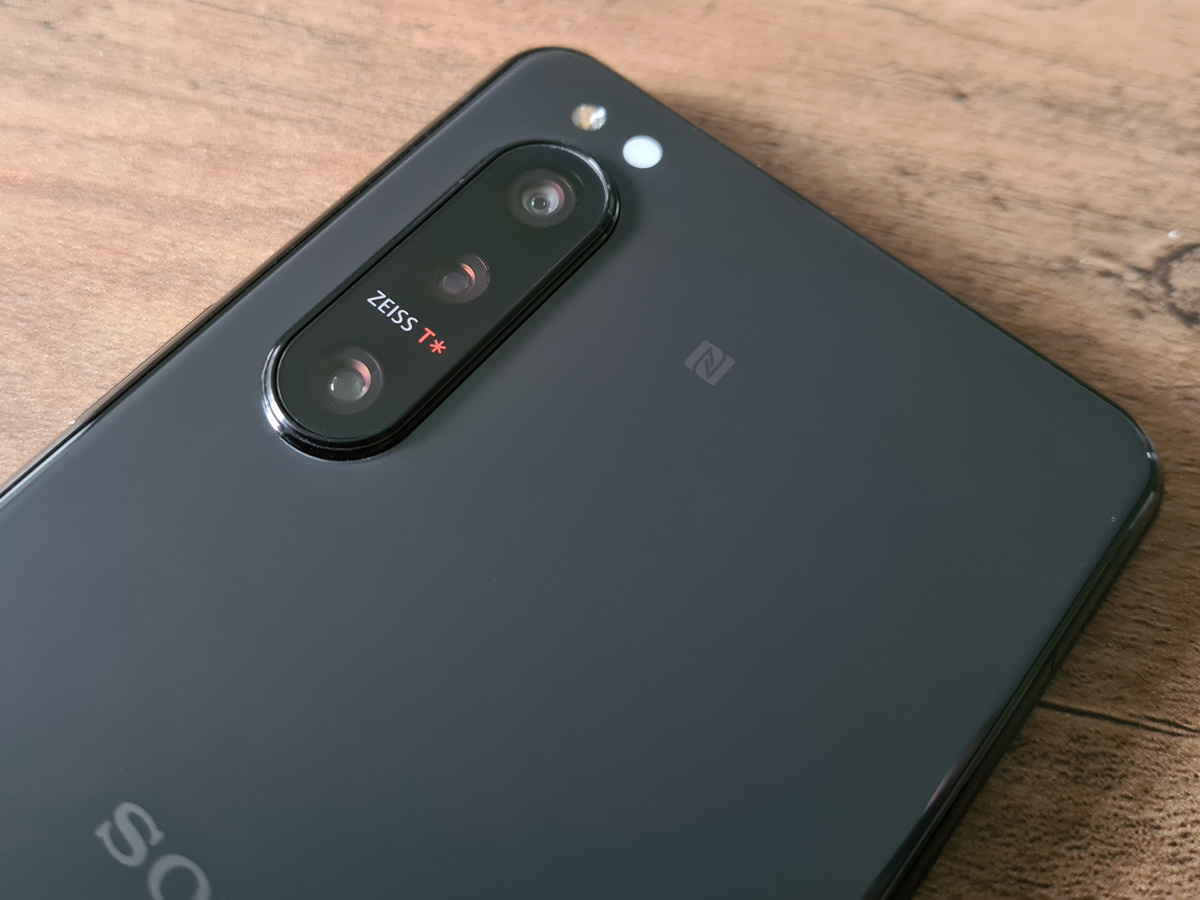
On the surface, everything in the camera department seems to have made the jump from the Xperia 1 II. You get the same trio of 12MP rear snappers, with a main 24mm lens, 70mm telephoto and 16mm wide-angle; each have an anti-reflective coating by Zeiss; and the fantastic Photography Pro app gives near complete control over your shooting settings.
Only the 3D time-of-flight sensor is missing, which Sony says only really impacts how quickly the camera can focus in low-light. Based on our testing, that seems to be the case – but for everything else, it should be just as responsive as the pricier phone.
It’s certainly no slouch, with focus and exposure being calculated 60 times a second across a whopping 247 autofocus points. At full pelt, you’ll be shooting 20 frames every second. No other phone is as fast, and a lot of serious cameras won’t be able to keep up either. This makes shooting action a breeze, with quick focus lock and real-time eye tracking (for both people and animals) saving you from needing to tap-to-focus. Crisp results take minimal effort, whether you know what you’re doing or not.
Image quality is comfortably on par with the Xperia 1 II, with a consistent level of detail across all three sensors and a pleasing natural bokeh on close-up and macro shots. Sony’s image processing isn’t overly aggressive, yet retains sharpness where you expect it to, and colour balance is consistent as you swap between lenses.
Photos appear more true-to-life than rival handsets, with a slightly muted tone that favours realism over vibrancy. It copes well with unevenly-exposed scenes, only struggling against particularly bright light sources, where HDR can’t stop skies from appearing blown out. Low light performance also remains a step behind Google, Apple and Huawei, with no dedicated night mode.
Overall it’s a real step forward from the Xperia 5, and can compete with the best phones out there for flexibility, shot consistency and detail.
PERFORMANCE: POWER IN YOUR POCKET
By sticking with the same Qualcomm Snapdragon 865 CPU and 8GB of RAM, the Xperia 5 II is every bit as zippy as its bigger brother. It may fall behind handsets packing beefier Snapdragon 865+ silicon, but unless you obsess over benchmark leaderboards you’d never know – everything feels perfectly responsive.
Apps open near-instantly, multitasking isn’t a concern and the UI is silky smooth, whether you’ve bumped up the refresh rate or not. A slice of heat-dissipating graphene apparently helps keep the chipset from getting too toasty, with the rear glass staying largely cool to the touch through our testing.
Importantly there’s more than enough GPU grunt for games, so even demanding 3D titles like Fortnite and Call of Duty Mobile are able to get the benefit of the 120Hz display. The 21:9 aspect ratio literally expands your view in compatible games, so you’re able to see more than anyone rocking a 16:9 handset.
Qualcomm’s chipset also supports 5G networks, so you’re able to get much faster data speeds if you’re in an area with coverage and have signed up to the right network provider.
128GB of on-board storage is what we’d expect from a high-end phone, and microSD expansion means you can always add more capacity later if you find yourself running short.
OS & SOFTWARE: GET YOUR GAME ON
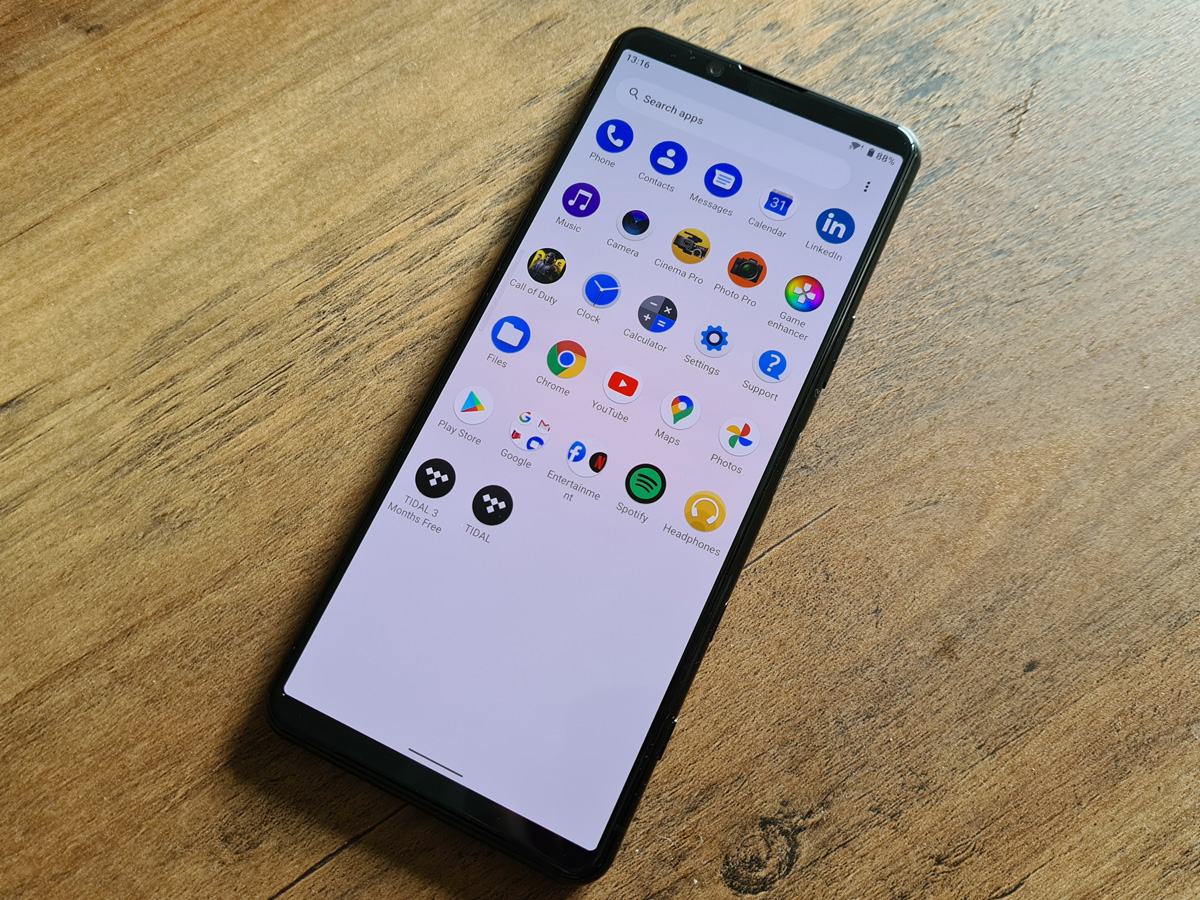
Sony’s approach to Android has been fairly hands-off for a few years now, and we’re big fans. It doesn’t try to overload you with apps and features right out the box, and the default UI is largely present and correct.
You get to pick between onscreen buttons or gesture navigation, and Google assistant is just a swipe away. There’s even a dedicated button for waking it up now. It’s easy to reach, and far enough away from the camera shutter button you won’t constantly mix the two up.
Only a handful of Sony apps come pre-installed alongside Google’s usual bunch, and they’re almost all useful. Game Enhancer is the highlight, giving you fine-grain control over screen refresh rate, touch response and power usage while in-game so that even demanding titles always look their best. 120Hz not responsive enough for you? A 240Hz blur reduction setting injects black frames for an even smoother appearance.
The phone’s more manageable dimensions mean you don’t need to rely on Sony’s Side Sense gestures quite as often as you did with the Xperia 1 II, but the easy-reach shortcuts are still one of the best ways to access split-view multitasking on any Android phone. You tap the screen now, instead of the side panels themselves, but it’s just as effective.
Sony is usually pretty quick when it comes to software updates, so while it ships with Android 10, the latest version of Google’s OS shouldn’t be too far behind.
BATTERY LIFE: JUST KEEPS GOING
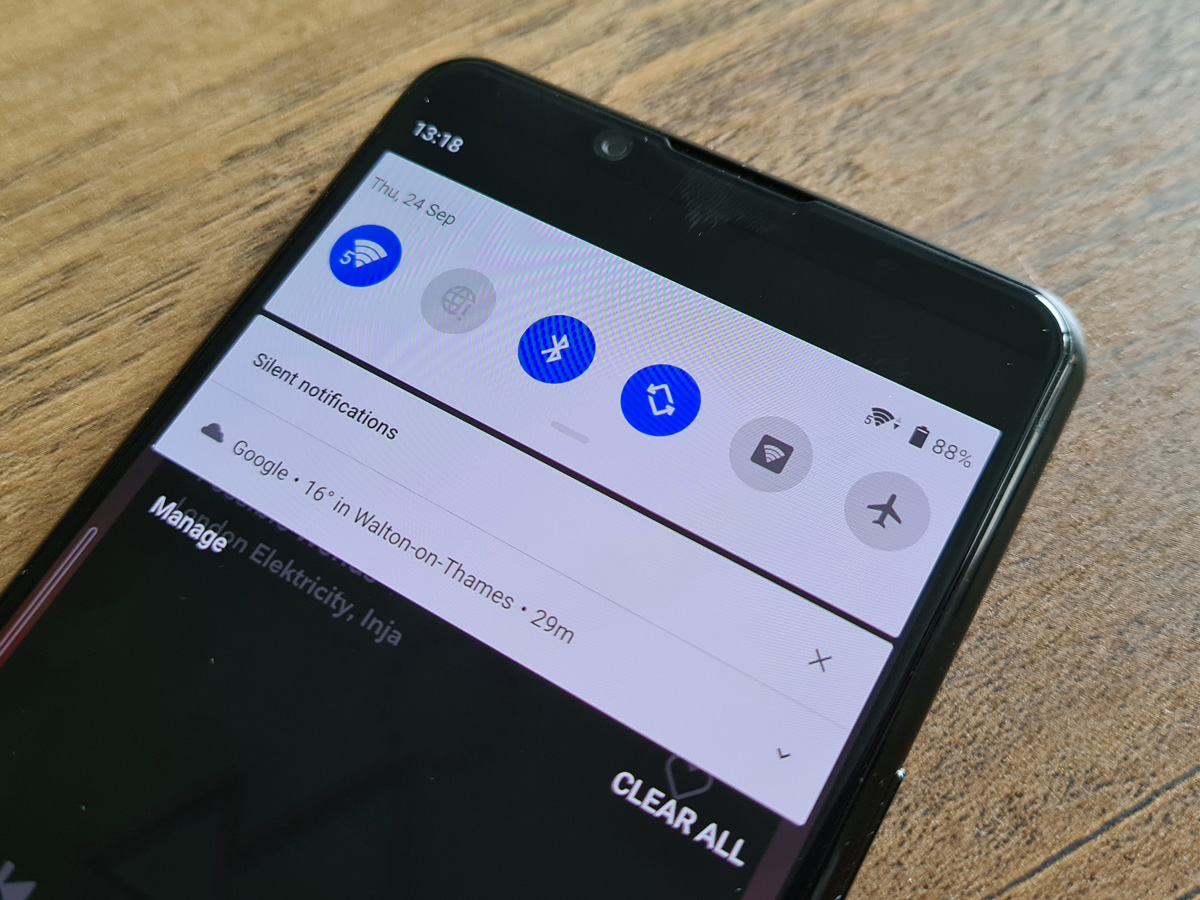
Squeezing a 4000mAh battery into the Xperia 5 II looks all the more impressive once you consider it’s the same capacity as the larger, more premium Xperia 1 II. And seeing how this phone doesn’t have a 4K display to keep juiced, it bodes well for longevity away from the mains.
We easily saw entire days of use between top-ups, even with lots of Bluetooth music streaming, photo snapping and some late night social media doomscrolling. It typically lasted through the night without being plugged in, too. Get stuck in an HDR Netflix binge or try and film a 4K video epic, though, and you’ll definitely need to recharge before bedtime.
Gaming is the other big drain, but a neat heat suppression mode bypasses the battery altogether for playing while tethered to the mains. This stops the phone’s internals from getting toasty and throttling, which would otherwise tank your frame rates, and keeps your battery healthy by avoiding overcharging.
Other battery saver tech is purpose-built for overnight topper-uppers, stopping the phone from fully recharging until just before you wake up in the morning. Combined, Sony reckons its handsets will retain significantly more battery capacity over their lifespan – handy if you’re planning on maxing out the length of your next phone contract.
The only downside? Wireless charging hasn’t made the cut this time around. Then again, we’ll happily take a 50% charge from just 30 minutes tethered to a 21W power brick.
SONY XPERIA 5 II VERDICT
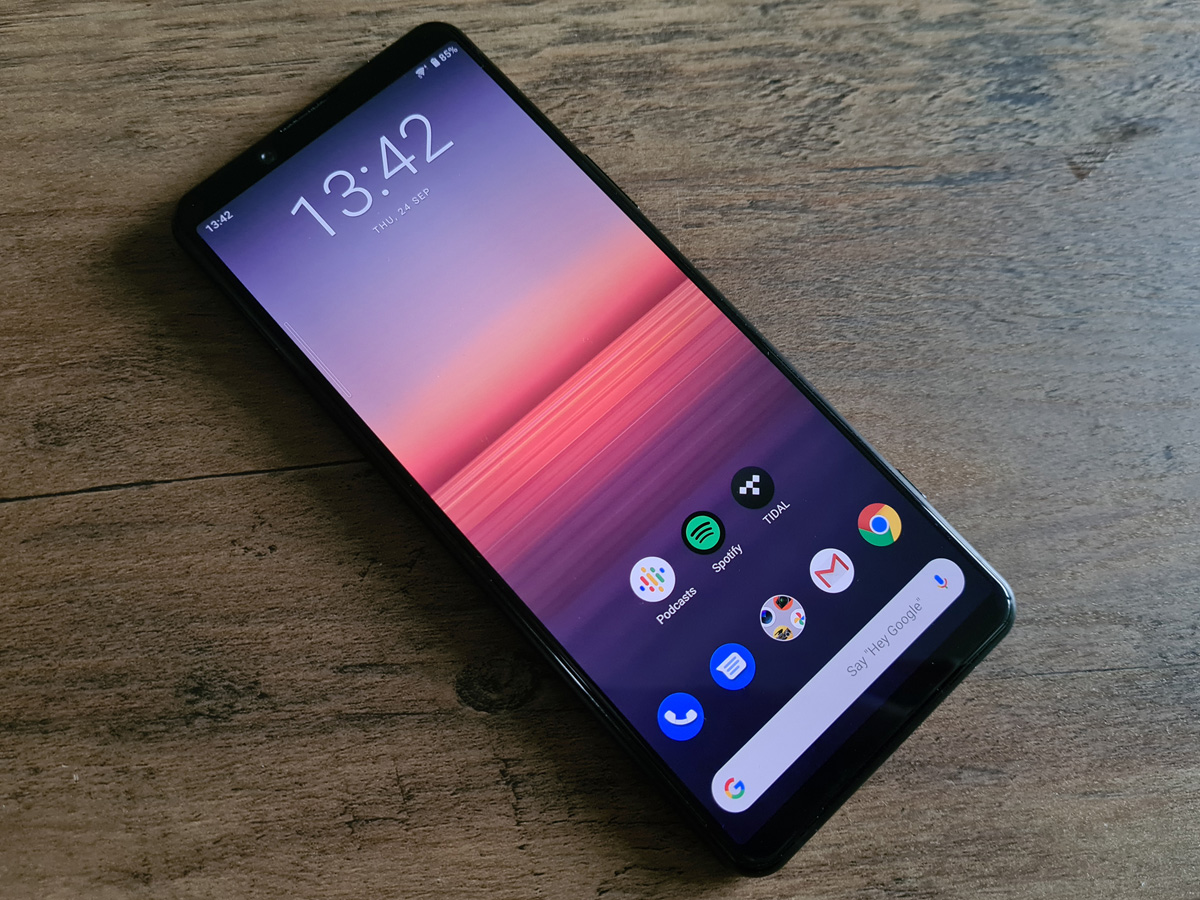
After Sony pulled out all the stops for the Xperia 1 II, this phone is evidence that dialling things back a notch can make for a more well-rounded device.
Ditching the 4K display was always going to have the biggest impact, but elsewhere only the most minor of compromises have been made to reach a more mainstream price point. You still get superb performance, a brilliantly flexible camera and a gorgeous screen, made all the more better by a high refresh rate. A sensible resolution helps give battery life a boost, too.
There are more affordable alternatives, sure, but few can match the Xperia 5 II as a whole package. If you were considering a OnePlus 8 Pro or Samsung Galaxy S20 5G, you should definitely at least try one of these before hitting that buy button.
Tech specs
| SCREEN | 6.1in, 2520×1080 OLED w/ 21:9 aspect ratio, 120Hz refresh rate, HDR BT.2020 CPU: Qualcomm Snapdragon 865 octa-core |
| MEMORY | 8GB RAM |
| CAMERA | 12MP, f/1.7 24mm w/ Dual Pixel PDAF & OIS, 12MP, f/2.4, 70mm w/ PDAF, OIS, 12MP, f/2.2, 16mm w/ Dual Pixel PDAF rear, LED flash. 8MP, f/2.0, 24mm front |
| STORAGE | 128GB on-board, microSD expansion |
| OPERATING SYSTEM | Android 10 |
| BATTERY | 4000mAh non-removable |
| DIMENSIONS | 158x68x8mm, 163g |
Stuff Says…
Takes everything we loved about the Xperia 1 II and makes it a lot more affordable, with minimal compromise
Good Stuff
Flagship hardware, sensibly priced
Pro-grade camera apps
Gorgeous high-refresh rate screen
Bad Stuff
No wireless charging
Fingerprint sensor tricky for left-handers
